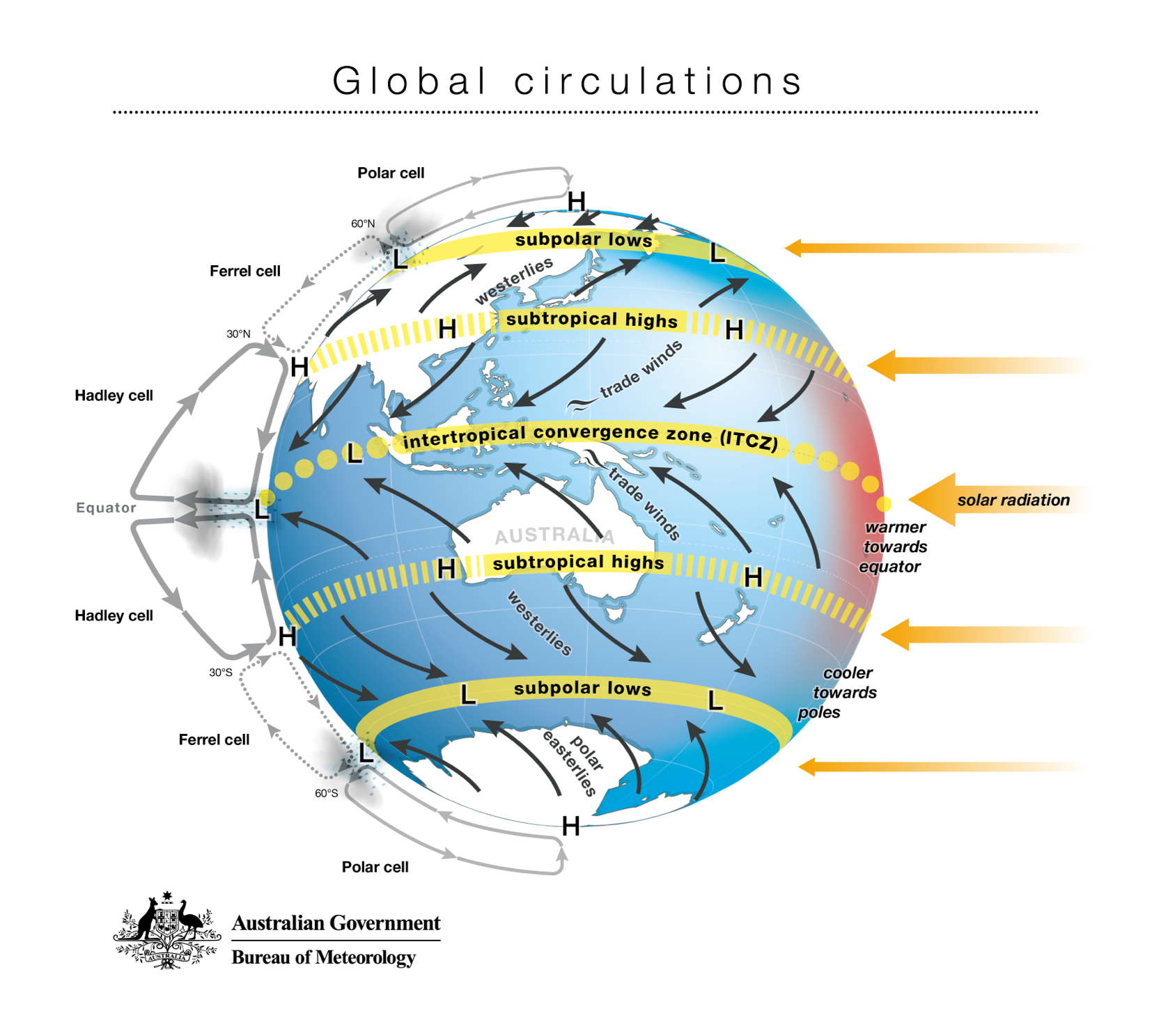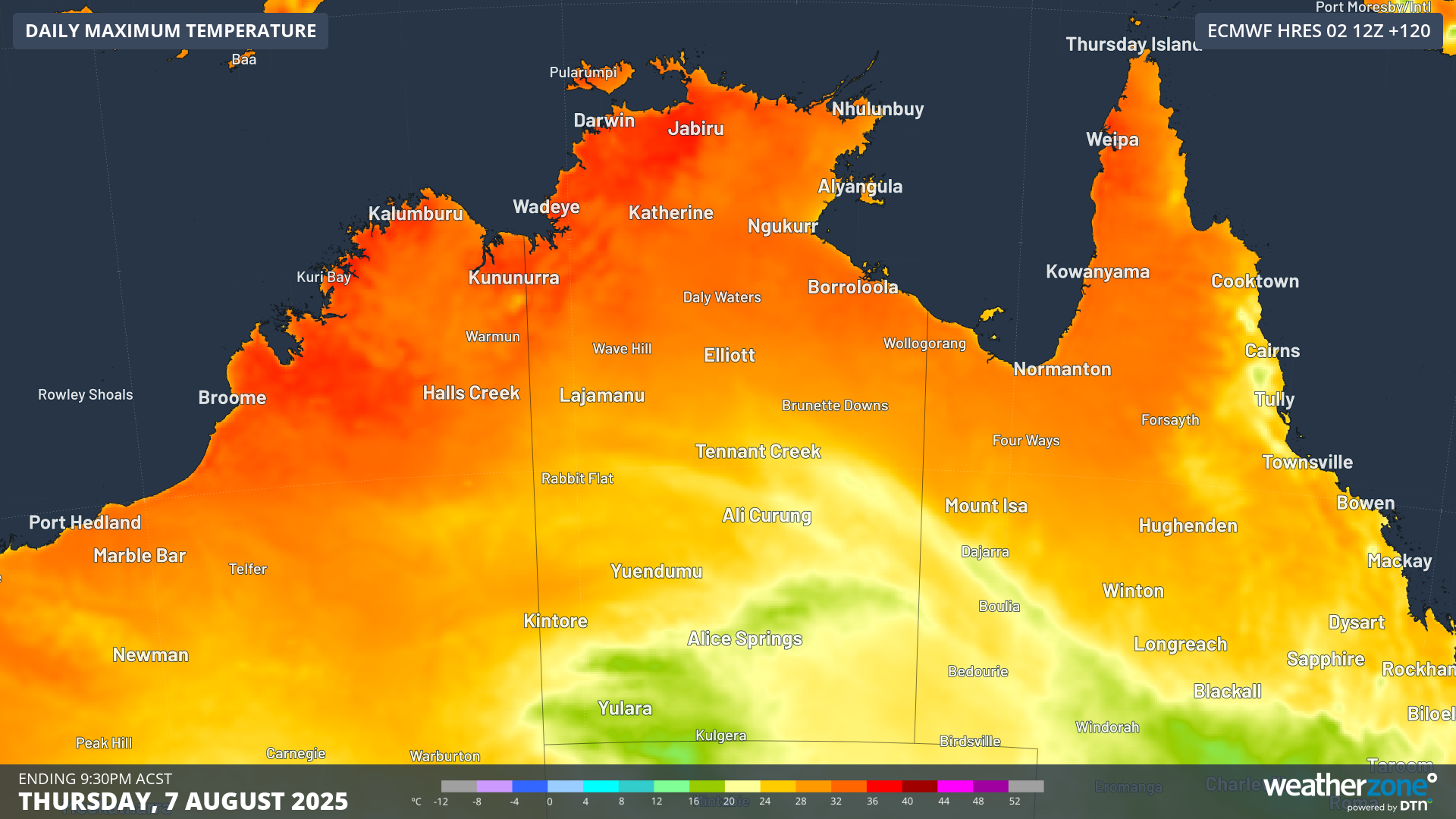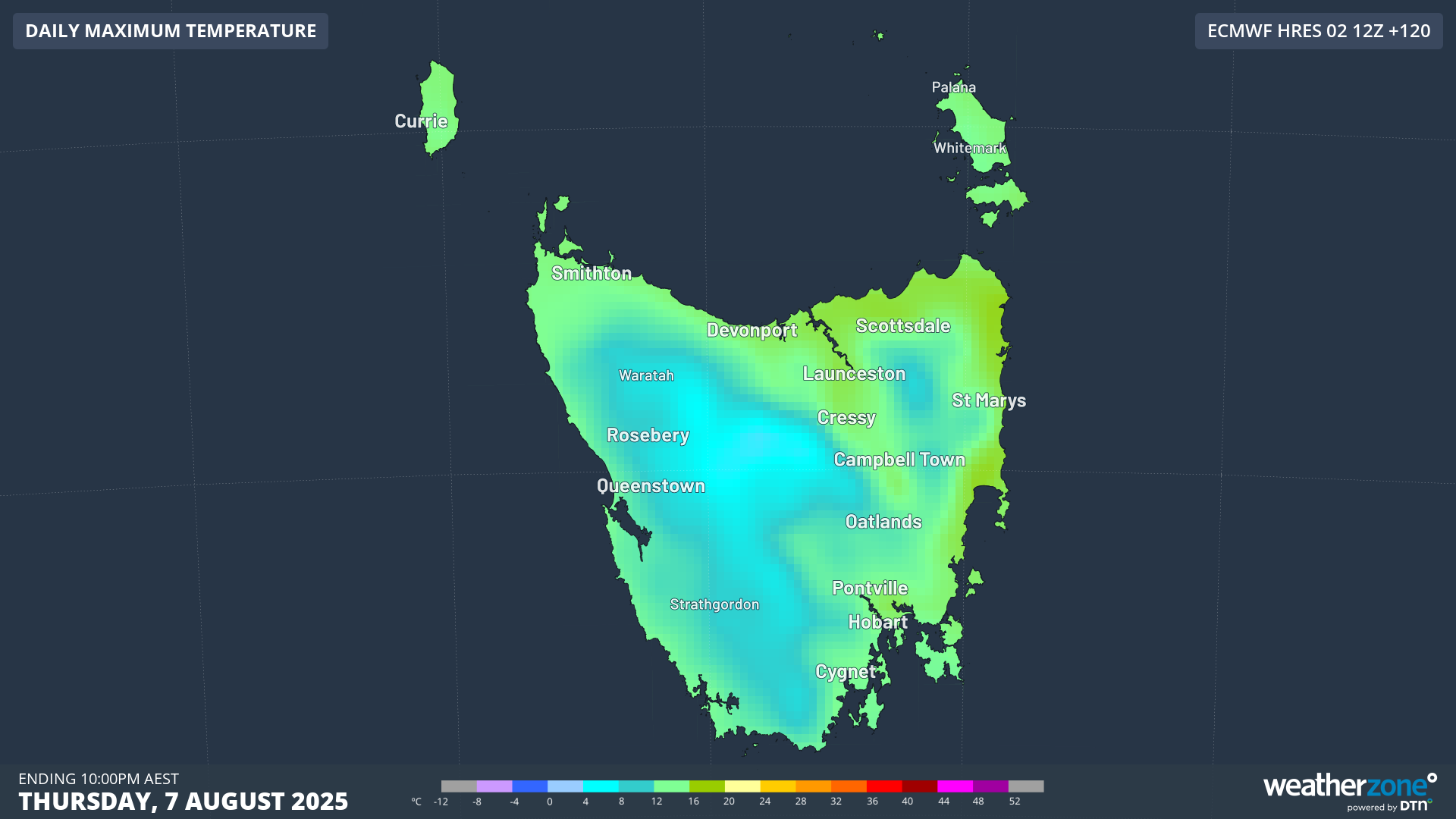Darwin sizzles while Hobart shivers
Australia is a land of extremes. At this time of year, you can be baking in the north and shivering in the south. Nowhere is this contrast more apparent, most of the time, than between Darwin and Hobart.
At the moment , far north Australia’s dry season is in full swing. This is associated with the descending limb of the Hadley circulation which shifts north with the overhead sun during winter. The descending air brings areas of high pressure which are associated with settled weather. In the summer the Hadley cell shifts southwards with a low trough becoming established about the Top End bringing the characteristic wet season thunderstorms. The long sunny days at this time of year and the relatively warm seas (around 26C) help generate and sustain the warm ‘winter’ weather.

A graphic from the Bureau of Meteorology that depicts Global Atmospheric Circulation
In contrast, Hobart is under the influence of the Ferrel cell, a circulation that effects the mid-latitudes and is associated with large contrasts in air mass between the warm tropical north and the bitterly cold polar south. These contrasts help drive deep areas of low pressure that can usher in chilly airstreams from sub-polar regions. In addition, the cooler seas (around 13C) that surround Tasmania, combined with the longer nights (allowing for more cooling) often exacerbate the cooler conditions.

In Darwin, temperatures are expected to hover around the high twenties to low thirties for much of this week, with nights holding up at around 20°C. Maximum temperatures in Darwin are expected to reach 33C on Thursday. No significant rain is on the horizon for the foreseeable.

Meanwhile, in Hobart it’s a different world. Daytime temperatures will struggle to reach double digits later this week as a deep low over the Southern Ocean will tap into some bitingly cold air and propel it towards Tasmania with snow expected over the western Highlands.
The contrast is stark: a 20°C+ difference in daytime highs and an entirely different feel to the weather, all on the same continent.
For now, Australia’s north continues to swelter while the south stays relatively chilled. For some, the hot weather in the north is an excuse to get outside and enjoy the outdoors, whilst for southerners the cold weather might just be the perfect excuse to hunker down inside with a fire and a hot beverage.